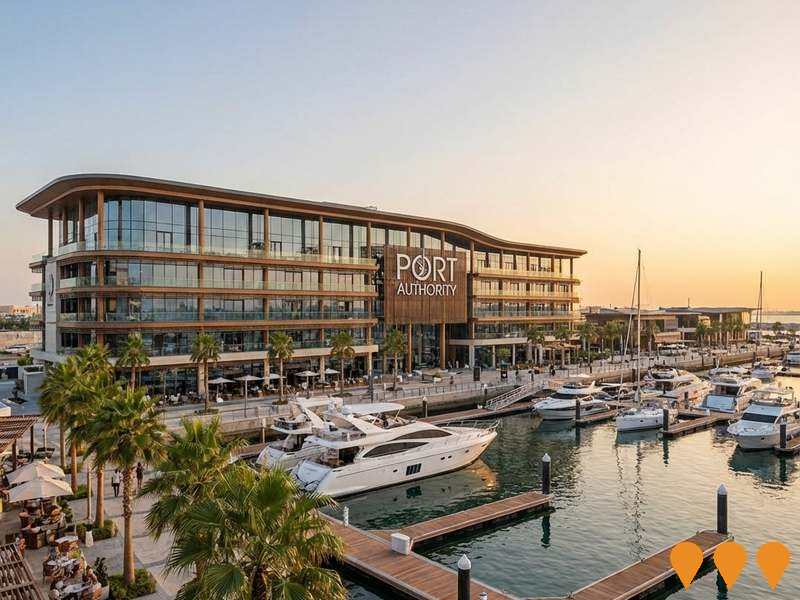Chart Color Schemes
est. as @ -- *
ABS ERP | -- people | --
2021 Census | -- people
Sales Activity
Curious about local property values? Filter the chart to assess the volume and appreciation (including resales) trends and regional comparisons, or scroll to the map below view this information at an individual property level.
Find a Recent Sale
Sales Detail
Population
An assessment of population growth drivers in Elsey reveals an overall ranking slightly below national averages considering recent, and medium term trends
Elsey's population is around 2,640 as of August 2025. This reflects an increase of 357 people since the 2021 Census, which reported a population of 2,283 people. The change was inferred from the estimated resident population of 2,643 from the ABS as of June 2024 and an additional 60 validated new addresses since the Census date. This level of population equates to a density ratio of 0 persons per square kilometer. Elsey's growth rate of 15.6% since the 2021 census exceeded the national average of 8.6%. Population growth was primarily driven by overseas migration, contributing approximately 57.1% of overall population gains during recent periods.
AreaSearch adopted ABS/Geoscience Australia projections for each SA2 area, released in 2024 with a base year of 2022. For areas not covered and post-2032 growth estimates, AreaSearch applied growth rates by age cohort provided by the ABS in its latest Greater Capital Region projections (released in 2023, based on 2022 data). Looking ahead, Australia's regional areas are projected to have above median population growth. Elsey is expected to expand by 421 persons to 2041, with an increase of 16.1% over the 17 years.
Frequently Asked Questions - Population
Development
AreaSearch assessment of residential development drivers sees a low level of activity in Elsey, placing the area among the bottom 25% of areas assessed nationally
Elsey has had limited development activity, averaging approximately three approvals per year over five years (16 approvals in total). This low level of development is typical of rural areas where housing needs are modest and construction activity is constrained by local demand and infrastructure capacity. It should be noted that the small number of approvals can significantly impact annual growth statistics.
Elsey has shown less construction activity than the rest of the Northern Territory, with its development pattern also falling below national averages. The new building activity comprises 67% detached houses and 33% medium to high-density housing, offering a mix of attached housing types at varying price points. By 2041, Elsey is projected to add 424 residents.
If current development rates continue, the housing supply may not keep pace with population growth, potentially increasing competition among buyers and supporting stronger price growth.
Frequently Asked Questions - Development
Infrastructure
Elsey has limited levels of nearby infrastructure activity, ranking in the 2ndth percentile nationally
Eleven infrastructure projects have been identified by AreaSearch as potentially impacting the area. These include RAAF Base Tindal Redevelopment, 50 New Houses at RAAF Base Tindal, Supporting Growth in Katherine East (Katherine East Residential Estate), and Katherine Logistics and Agribusiness Hub. The following list details those projects likely to be most relevant.
Professional plan users can use the search below to filter and access additional projects.
INFRASTRUCTURE SEARCH
 Denotes AI-based impression for illustrative purposes only, not to be taken as definitive under any circumstances. Please follow links and conduct other investigations from the project's source for actual imagery. Developers and project owners wishing us to use original imagery please Contact Us and we will do so.
Denotes AI-based impression for illustrative purposes only, not to be taken as definitive under any circumstances. Please follow links and conduct other investigations from the project's source for actual imagery. Developers and project owners wishing us to use original imagery please Contact Us and we will do so.
Frequently Asked Questions - Infrastructure
Australia-Asia PowerLink (AAPowerLink)
The world's largest renewable energy infrastructure project, comprising a 17-20GW solar farm and 36-42GWh battery storage in the Barkly Region, connected via HVDC transmission to Darwin and Singapore. The project received Commonwealth environmental approval in August 2024. It aims to supply up to 4GW of green electricity to Darwin industrial customers and export power to Singapore.

RAAF Base Tindal Redevelopment
Major upgrade program at RAAF Base Tindal near Katherine, NT, to enhance airbase capacity and resilience. Scope includes runway and taxiway upgrades, new air movements terminal and parking apron, expanded fuel storage, power-water-sewer upgrades, new central emergency power station, visiting squadron and security facilities, and new live-in accommodation for personnel. Works are being delivered under Stage 6 Redevelopment and the US Force Posture Initiatives, managed by Lendlease with packages led by contractors including BMD and Nova-Nacap.
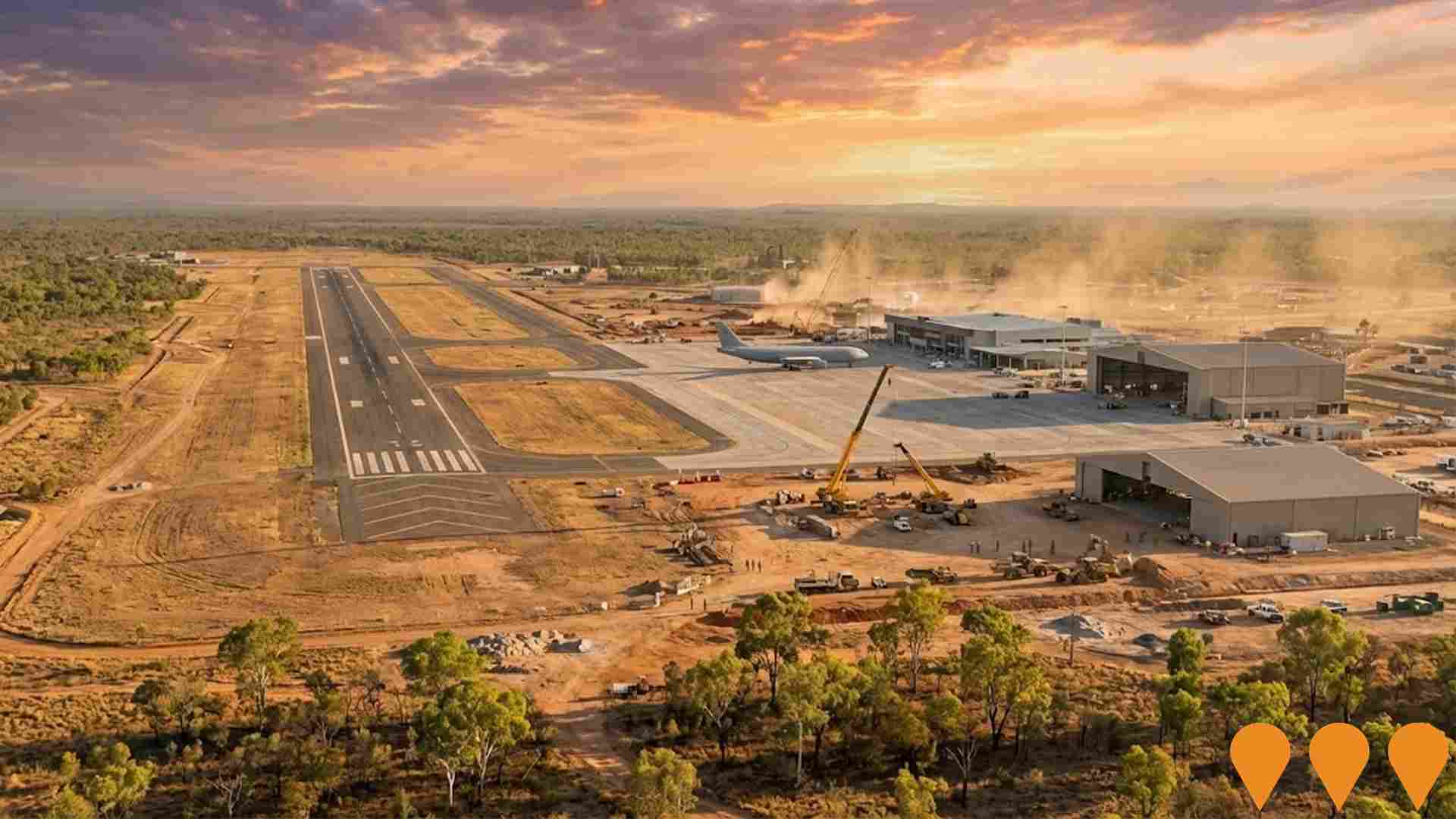
Katherine Logistics and Agribusiness Hub
Large-scale industrial subdivision and intermodal hub adjacent to rail and highway links to support storage, processing and freight for agriculture and resources in the Big Rivers region. Current works focus on enabling infrastructure including water supply and headworks.
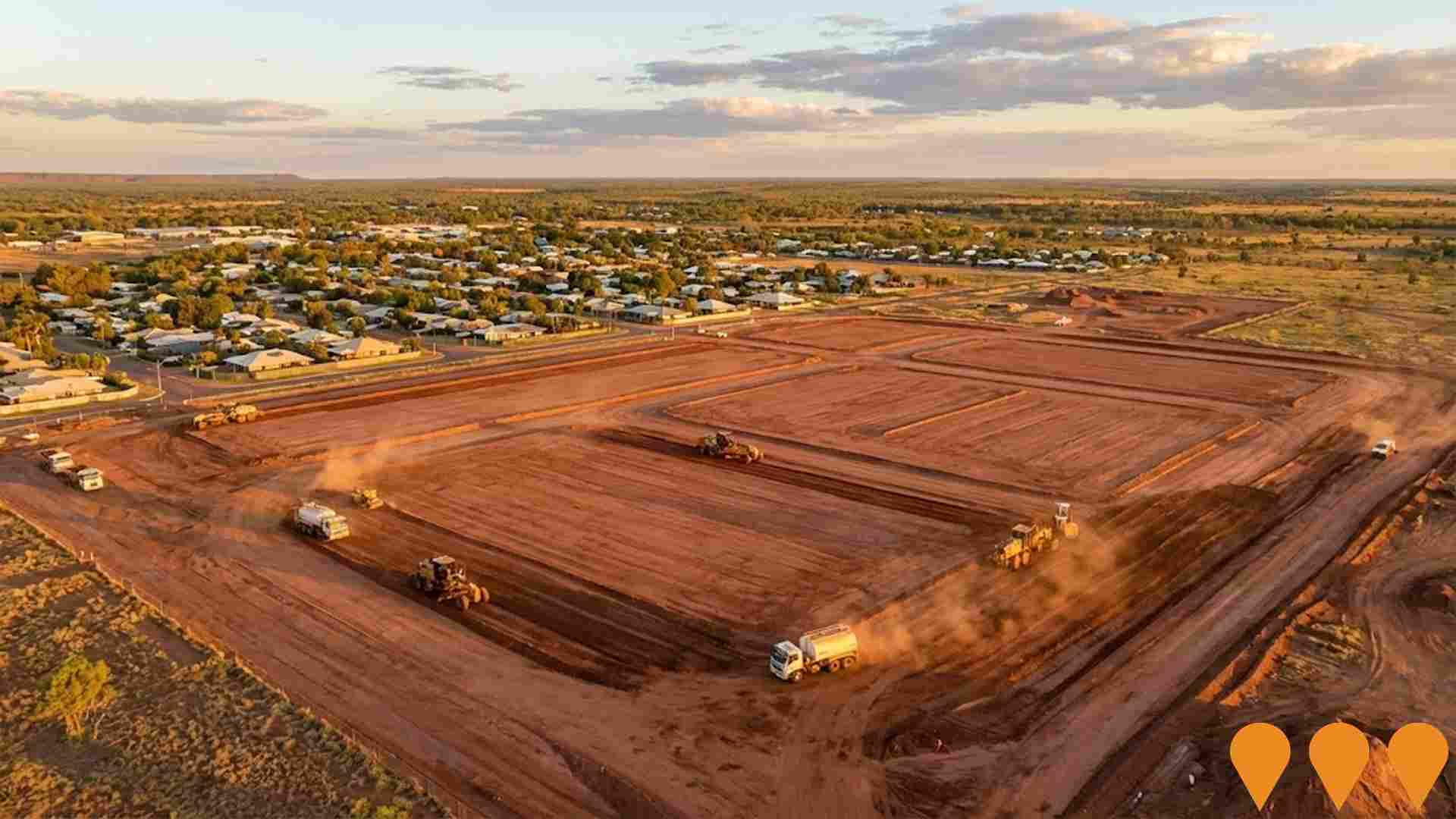
Katherine Solar Farm (ENI)
34MW solar farm with 6MW battery energy storage system, currently the largest photovoltaic plant in Northern Territory. Features innovative cloud coverage prediction technology and avoids 63,000 tonnes of CO2 emissions annually. Contributes significantly to NT's 50% renewable energy target by 2030.
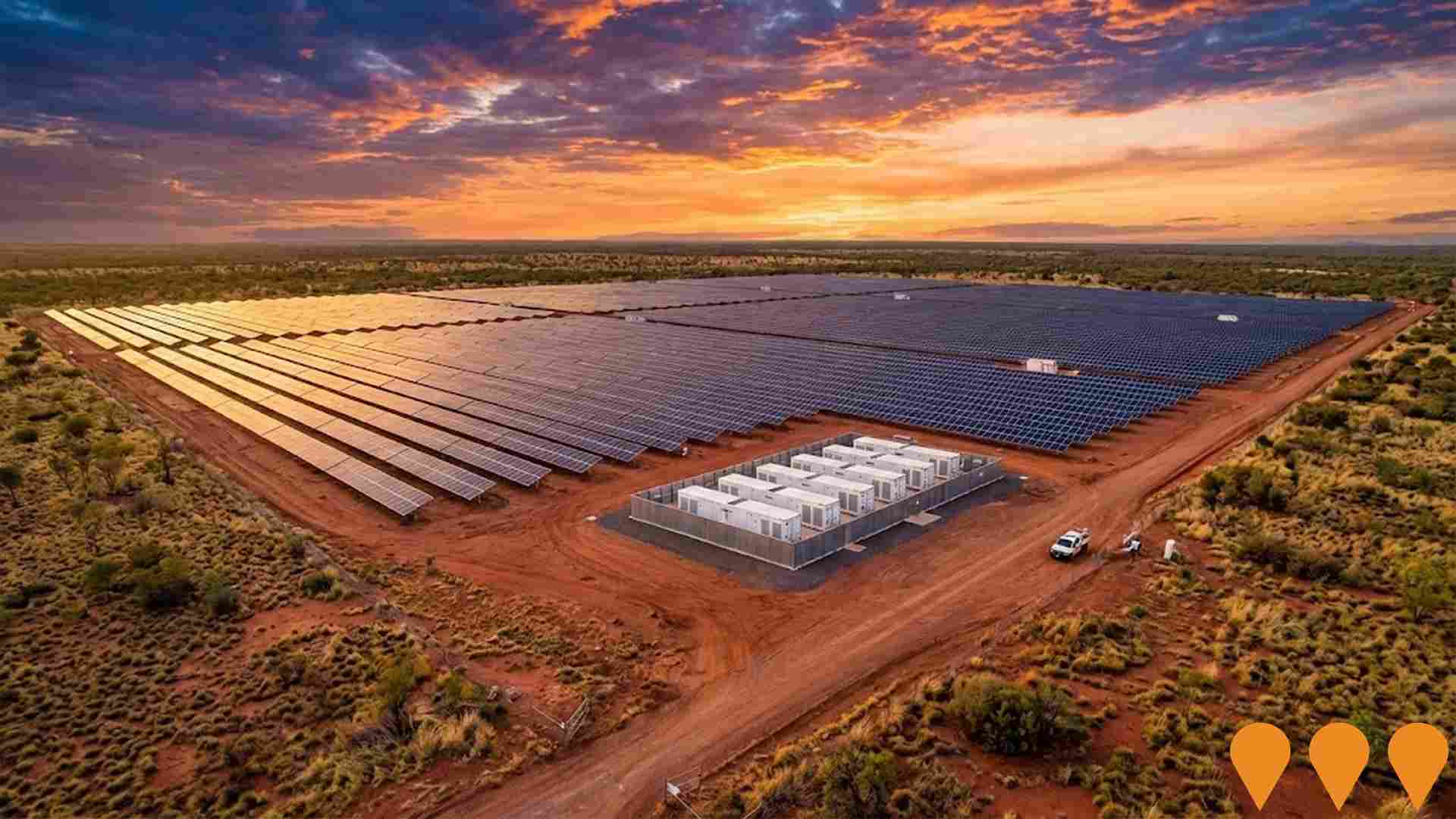
Desert Springs Octopus Renewable Energy Program
Majority Indigenous-owned developer pursuing a near-term pipeline of grid-connected solar and battery projects along the Darwin-Katherine Electricity System, with potential to expand into wind and green hydrogen. Partnership includes Octopus Australia with Larrakia Nation and Jawoyn Association to deliver utility-scale renewable energy and community benefit sharing.

Kakadu Tourism and Infrastructure Upgrades
A $216 million investment by the Australian Government to upgrade tourism infrastructure within Kakadu National Park. This includes improvements to roads, visitor facilities, and the development of a new World Heritage Interpretive Centre. The project is a key component of the transition of Jabiru to a tourism-based economy.
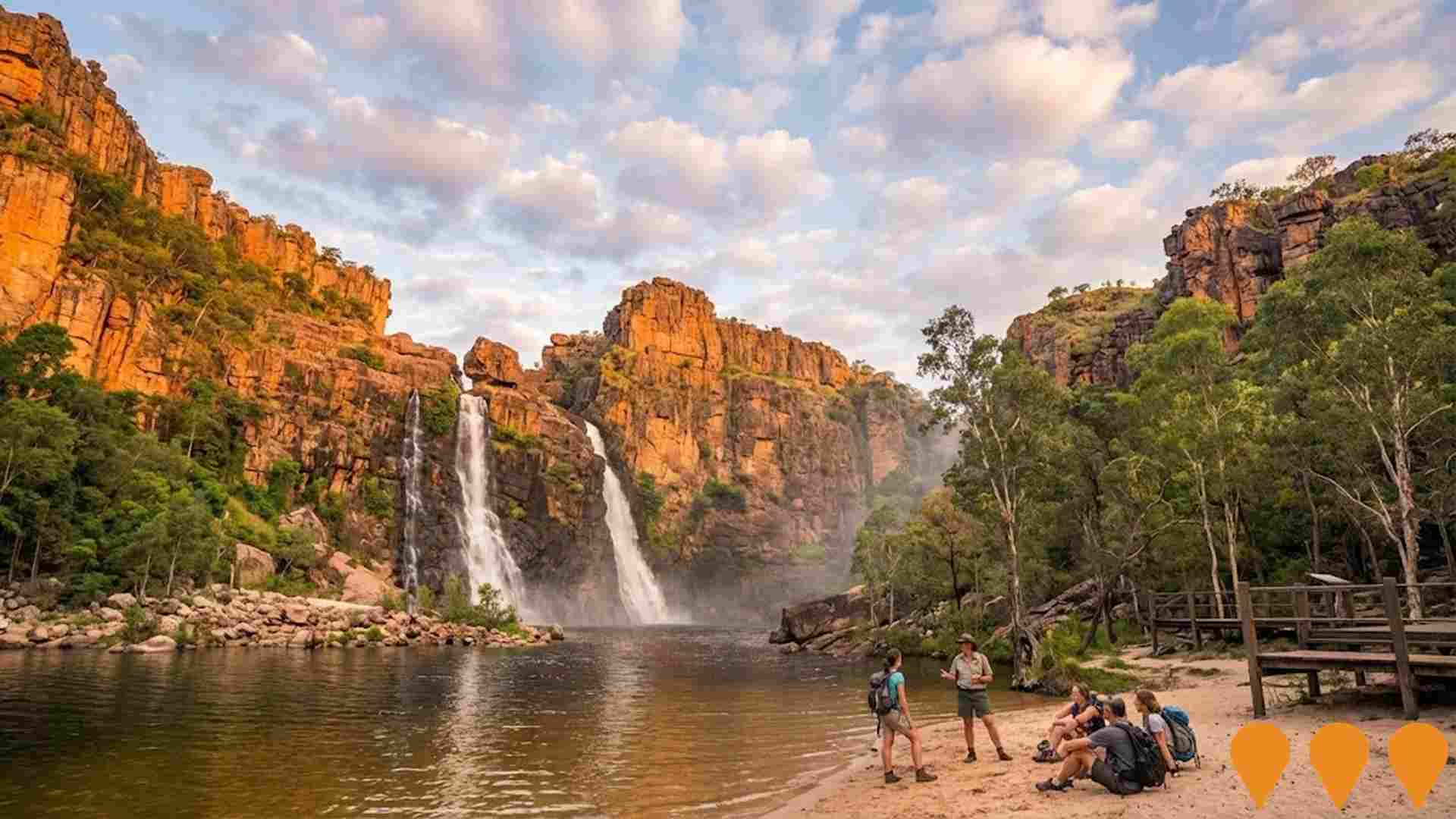
Supporting Growth in Katherine East (Katherine East Residential Estate)
NT Government enabling works to service six superlot parcels outside the flood zone in Katherine East. The program delivers new enabling streets, headworks, stormwater upgrades and a neighbourhood centre site, creating potential for about 300 future residential lots and local retail and community uses. Budget 2024 allocated $16m for a sewer pump station and network plus further subdivision works. Co-funded by NT and Australian Governments.

50 New Houses at RAAF Base Tindal
Design and construction of 50 four-bedroom, two-bathroom houses for Defence Housing Australia (DHA) at RAAF Base Tindal.
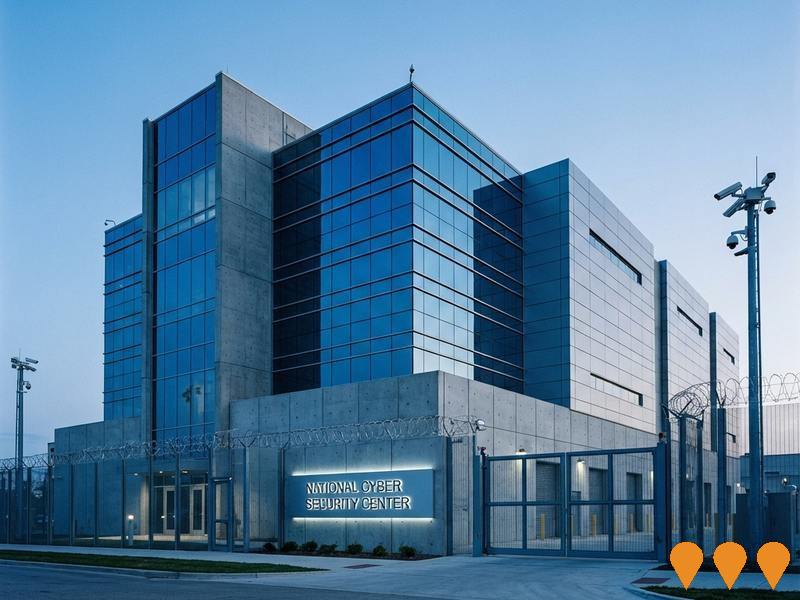
Employment
Employment conditions in Elsey face significant challenges, ranking among the bottom 10% of areas assessed nationally
Elsey has a balanced workforce consisting of white and blue collar jobs, with essential services well represented. The unemployment rate in Elsey is 11.6%.
As of June 2025, there are 968 residents employed while the unemployment rate stands at 5.7%, which is higher than the Rest of NT's rate of 5.9%. Workforce participation in Elsey lags behind the Rest of NT at 39.1% compared to 50.7%. Key industries of employment among Elsey residents are agriculture, forestry & fishing, education & training, and public administration & safety. The area has a strong specialization in agriculture, forestry & fishing with an employment share that is 5.7 times the regional level.
Meanwhile, health care & social assistance has limited presence with 10.3% employment compared to 18.8% regionally. Elsey appears to offer limited local employment opportunities based on Census data comparisons of working population versus resident population. Between June 2024 and June 2025, the labour force decreased by 1.8% in Elsey while employment decreased by 1.7%, with unemployment remaining relatively stable. This contrasts with the Rest of NT where employment contracted by 1.7%, the labour force fell by 1.8%, and unemployment fell marginally. Jobs and Skills Australia's national employment forecasts from May 2025 project national employment growth of 6.6% over five years and 13.7% over ten years, but growth rates vary significantly between industry sectors. Applying these projections to Elsey's employment mix suggests potential local growth of approximately 5.1%% over five years and 11.4% over ten years.
Frequently Asked Questions - Employment
Income
Income metrics place the area in the bottom 10% of locations nationally according to AreaSearch analysis
According to AreaSearch's aggregation of ATO data released for financial year ended June 2022, Elsey had a median income among taxpayers of $37,742. The average income level was $46,612. This is below the national average which stood at $51,655 and $61,577 across Rest of NT respectively. Based on Wage Price Index growth of 12.01% from financial year ended June 2022 to September 2025, current estimates would be approximately $42,275 for median income and $52,210 for average income as of that date. According to the Census conducted in August 2021, individual incomes at the 1st percentile were $334 weekly while household income was at the 28th percentile. The largest segment of income distribution comprised 35.8% earning between $1,500 and $2,999 weekly, with 945 residents falling into this category. This is consistent with broader trends across the broader area showing 33.6% in the same income category. Housing costs were manageable with 94.5% retained as disposable income, however it sat below average at the 40th percentile.
Frequently Asked Questions - Income
Housing
Elsey is characterized by a predominantly suburban housing profile, with above-average rates of outright home ownership
In Elsey, as per the latest Census data, 72.3% of dwellings were houses with the remaining 27.8% being semi-detached homes, apartments, and other types of dwellings. This is compared to Non-Metro NT's figures of 77.7% houses and 22.3% other dwellings. Home ownership in Elsey stood at 16.8%, with mortgaged properties at 4.6% and rented dwellings at 78.6%. The median monthly mortgage repayment was $1,300, lower than Non-Metro NT's average of $1,615. The median weekly rent in Elsey was recorded as $80, significantly lower than Non-Metro NT's figure of $178 and the national average of $375. Nationally, Elsey's mortgage repayments were notably below the Australian average of $1,863.
Frequently Asked Questions - Housing
Household Composition
Elsey features high concentrations of group households, with a higher-than-average median household size
Family households account for 73.8% of all households, including 33.6% couples with children, 21.3% couples without children, and 16.3% single parent families. Non-family households constitute the remaining 26.2%, with lone person households at 21.5% and group households comprising 3.9%. The median household size is 3.8 people, which is larger than the Rest of NT average of 3.2.
Frequently Asked Questions - Households
Local Schools & Education
Elsey faces educational challenges, with performance metrics placing it in the bottom quartile of areas assessed nationally
Elsey faces educational challenges with university qualification rates at 8.8%, significantly below the Australian average of 30.4%. This presents both a challenge and an opportunity for targeted initiatives. Bachelor degrees are most common at 6.5%, followed by postgraduate qualifications (1.7%) and graduate diplomas (0.6%). Trade and technical skills are prominent, with 31.3% of residents aged 15+ holding vocational credentials - advanced diplomas (6.2%) and certificates (25.1%).
Educational participation is high at 28.8%, including 16.6% in primary education, 6.7% in secondary education, and 1.1% pursuing tertiary education. Six schools operate within Elsey, educating approximately 386 students. The area has varied educational conditions, with a mix of 1 primary school and 5 K-12 schools.
Frequently Asked Questions - Education
Schools Detail
Nearby Services & Amenities
Transport
No public transport data available for this catchment area.
Frequently Asked Questions - Transport
Transport Stops Detail
Health
Elsey's residents boast exceedingly positive health performance metrics with very low prevalence of common health conditions across all age groups
Health outcomes data shows excellent results across Elsey, with very low prevalence of common health conditions across all age groups. The rate of private health cover is extremely low at approximately 46% of the total population (around 1,224 people), compared to 49.8% in the rest of the Northern Territory and a national average of 55.3%. Diabetes and heart disease are the most common medical conditions in the area, affecting 7.1% and 5.9% of residents respectively.
A total of 77.3% of residents declare themselves completely clear of medical ailments, compared to 78.3% in the rest of the Northern Territory. Elsey has 7.2% of its residents aged 65 and over (190 people), which is lower than the 8.2% in the rest of the Northern Territory. Health outcomes among seniors are particularly strong, broadly in line with the general population's health profile.
Frequently Asked Questions - Health
Cultural Diversity
The level of cultural diversity witnessed in Elsey was found to be above average when compared nationally for a number of language and cultural background related metrics
Elsey's cultural diversity is above average with 5.8% of its population born overseas and 74.2% speaking a language other than English at home. Christianity is the predominant religion in Elsey, comprising 52.0% of people. However, there is an overrepresentation in Other religions, which constitutes 7.5% compared to Rest of NT's 3.6%.
The top three ancestry groups are Australian Aboriginal (67.1%, regional average 43.9%), Australian (10.1%, regional average 17.5%), and English (8.9%, regional average 14.4%). Notably, French ethnicity is overrepresented at 0.4% in Elsey compared to the regional average of 0.2%.
Frequently Asked Questions - Diversity
Age
Elsey hosts a very young demographic, ranking in the bottom 10% of areas nationwide
Elsey's median age in 2021 was 29 years, lower than the Rest of Northern Territory's figure of 31 and significantly lower than Australia's median age of 38 years. The 2021 Census data revealed that individuals aged 15-24 were prominently represented at 16.8%, while those aged 45-54 constituted a smaller proportion at 9.6% compared to the Rest of Northern Territory. Post-census data showed changes in age distribution, with the 35-44 group growing from 13.3% to 16.0%. Conversely, the 5-14 cohort declined from 16.7% to 14.8%, and the 45-54 group decreased from 10.9% to 9.6%. By 2041, Elsey's age composition is projected to shift notably, with the 45-54 cohort increasing markedly by 130 people (52%), from 252 to 383. Conversely, the 5-14 cohort is projected to decline by 17 people.

